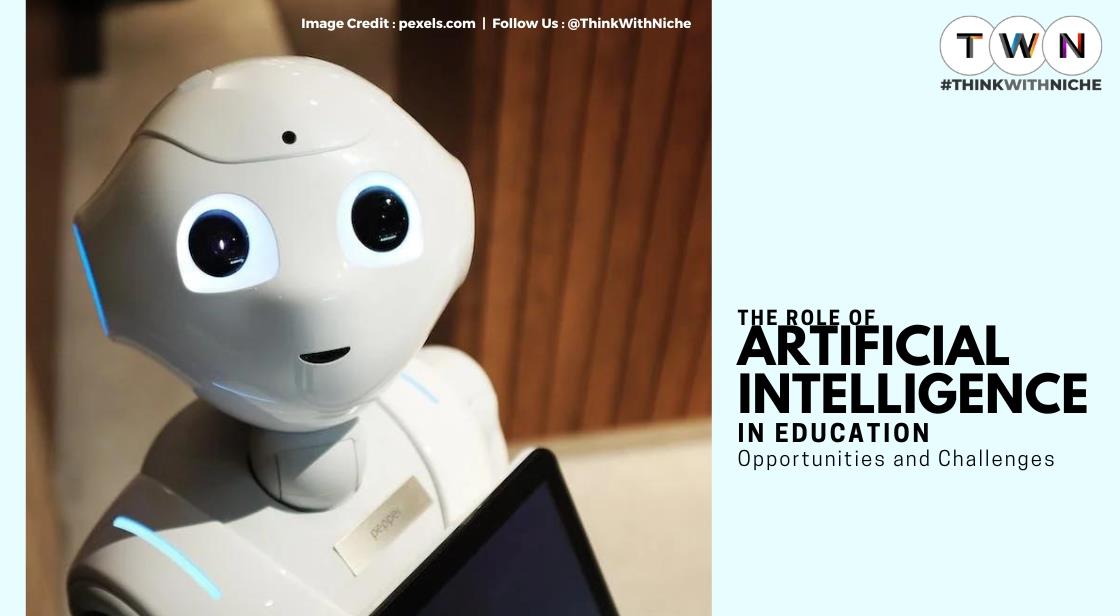The Role Of Artificial Intelligence In Education: Opportunities And Challenges

Blog Post
The year 2023 will be the first year in which people will freely interact with Artificial Intelligence. Since the moment OpenAI introduced ChatGPT, people have been obsessing over what it could do. Programmers, copywriters, pilots, college teachers, and everyone else in between got scared.
A lot of people are worried about their jobs. However, the Sci-Fi image of an evil AI system ruling our lives is still farfetched. Will students learn from machines in the future? What can AI do for the education system today? Are human teachers finally history?
We will look at how AI is used in education in this article. We'll make an effort to understand what benefits it might bring about. We will, however, also outline some of the current AI systems' limitations.
In this article, we are going to examine the role of AI in education. We’ll try to understand what improvements it can produce. But we will also reveal some limitations of contemporary AI systems.
The Role Of Artificial Intelligence In Education: Opportunities And Challenges
Automating teacher’s work
The most notable advantage of AI is process automation. Grading tests, reviewing homework, and other tasks can be a thing of the past. Wait a minute, can AI be trained to grade assignments? Can AI be trained to grade homework? Yes, it can! Numerous AI solutions can test essays, standardized tests, and other assignments. AI Grader can process hundreds of assignments in a breeze. It can work with more than 100 languages, and it constantly evolves.
However, there are certain limitations to this software. It needs to learn how to grade students’ work. Therefore it “takes notes” from assignments graded by other teachers. This means that AI Grader has human role models. So, it can be faster and less prone to errors due to fatigue or loss of focus. However, it will base its grading system on human examples. In conclusion, the work will be automated but only as good as human role models.
Help with schoolwork!
Artificial Intelligence software can crunch volumes of data in a second. If you tried ChatGPT or saw it work, you noticed how fast it is. It can write computer code faster than any human. It produces logical answers to even the most ridiculous questions. A student can type “please write research paper for me", introduce a few guidelines, and get help at any level of education. But does it beat professional writers? Well, no! Fast and analytical as they can be, AI platforms have no creative skills.
This means that AI can only analyze existing data and form output based on the information it can reach. You won’t get an entire essay on a plate in a minute. But you can get a great structure for your work. It can save a lot of time and make your writing process easier.
Providing equal learning opportunities
Teachers can have a hard time providing the same level of “educational service” to all kids in class. Inclusive classrooms require a lot of work, which some teachers might find challenging. Unlike humans, AI systems have no biases. Thanks to face-tracking technology, AI can read our expressions. This means it can read our confusion, satisfaction, or happiness Along withall other emotional responses and facial expressions we make. AI can also keep track of each student’s progress, learning habits, and overall development.
Moreover, it can answer students’ questions fast and with high accuracy. That is, as long as the answer is part of a database that the software can reach. This is a true problem because although it's efficient and progressive, AI is only a program. It can’t think and come up with original ideas. Therefore, an unusually curious kid could confuse AI and leave it without a proper response.
Conclusion
At this point, AI systems are perfect for process automation and system analysis. These sophisticated pieces of software are amazing at taking over mundane work. However, it lacks the creativity and unlimited imagination that we humans poses. If an AI was to paint a picture, it would need human input. Unlike us humans who get inspired on our own. We don’t need anyone telling us what to write or draw. More often than not, our emotions run our creative process.
For those who were afraid that AI will take over their jobs, think about what is it that you do. If your work is easy to automate, then you should be worried. However, if you’re invested in education things are much better. For now, AI can only help teachers with dull and time-consuming work. There are still many challenges that prevent Artificial Intelligence from shaping the minds of future generations.
Author Bio:
David C. Santana is a professional content writer engaged in new technology and trends. His work is based on most actual information and respectable sources. As a writer, David seeks to improve the everyday lives of this audience and inform them about the latest developments in different industries.
You May Like
EDITOR’S CHOICE












